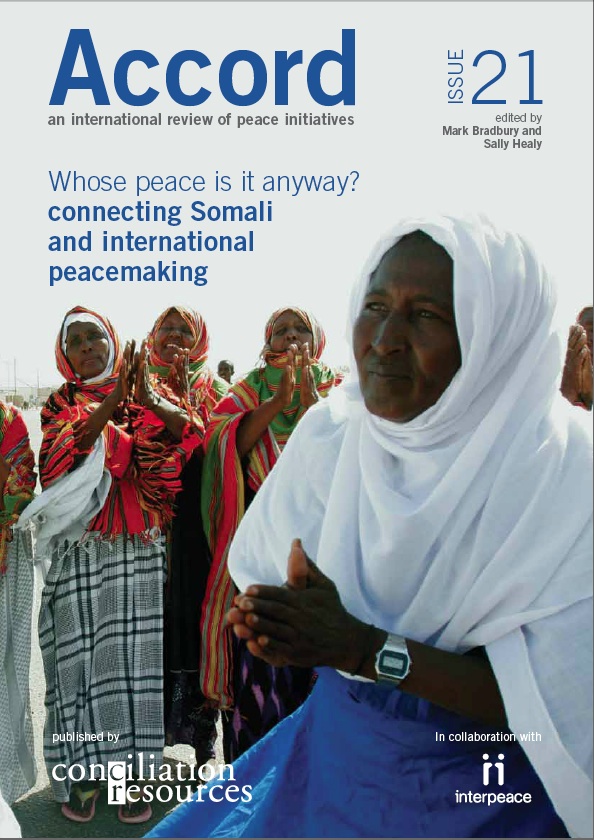An estimated one million Somalis of a total population of about nine million are thought to reside outside Somalia, making the Somali diaspora one of the largest globally, proportionate to population size.
Migration is not a new phenomenon among Somalis. It has occurred within the Somali territories for centuries, with extra-regional movement to Western Europe traceable to Somali seafarers who worked on colonial ships in the early twentieth century, a few of whom ended up settling and forming communities in port cities in countries like Britain and Norway.
Further Somali migration took place after Somalia’s independence, when Somali students went abroad to study in Western universities. Later in the 1970s a large number of Somalis migrated to Gulf states to seek employment and other economic opportunities stimulated by the oil boom.
From the 1980s onwards, as the Somali Salvation Democratic Front (SSDF) and the Somali National Movement (SNM) insurgencies developed, an increasing number of Somalis opposed to the regime of Mohamed Siyad Barre went into political exile in neighbouring countries, the Gulf states and the West. By far the largest wave of migration has emerged since the start of the Somali conflict and subsequent collapse of the Somali government in 1991.
The majority of those who took flight from the war went to Kenya, Ethiopia, Djibouti and Yemen, where thousands still remain in protracted limbo and displacement as refugees in camps and cities. A smaller but still considerable number were able to migrate further, joining already established communities in Middle Eastern countries, Western Europe, the US and Canada.
Reliable estimates of the size of the Somali diaspora are hard to obtain because of difficulties in collecting disaggregated data, differing residential status and continuing movements of people. But today the largest numbers of Somalis in the West are found in the UK (unofficial estimates suggest as many as 250,000) and North America, particularly in Minnesota and Ohio.
There are also sizeable Somali populations in the Netherlands, Norway, Denmark and Sweden, although there has been a recent trend for Somalis to migrate from these countries to the UK, where there is a larger Somali community, an apparently more multi-cultural society and better economic, educational and religious opportunities.
The Somali diaspora is widely dispersed and experiences of migration and reception differ from one country to another and in different times. This has influenced how Somalis have adapted to their new environments.
In countries such as the UK, Somalis joined existing Somali communities as well as other ethnic Muslim diasporas. Similarly in the US, Somalis found themselves as part of a wider African diaspora, although they still consider themselves different from other African migrants in that they are both Muslim and refugees. In countries like Denmark, Sweden and Norway, Somalis were simultaneously the first substantial African and Muslim immigrants, which often brought a host of problems relating to debates on integration and belonging.
Identity formation in the Somali diaspora can be influenced by where people end up resettling and which generation they belong to. Identity crisis and issues of belonging affect older Somali generations less, as their connection to Somalia is stronger and their beliefs more crystallised.
While there is some variation, older Somali migrants have generally reformed along clan identities. They have reasserted their Islamic values and embraced their Islamic identity, and they find it hard to integrate. They constantly look to Somalia and are engrossed by the political dynamics of the homeland, waiting for the possibility to return.
The surge in communication systems in today’s globalised era has enabled Somalis to remain connected with their home country and in touch with families dispersed across the world.
The nature of the long conflict in Somalia has made it necessary for diaspora Somalis to establish strong networks and to engage in a wide variety of transnational activities. Remittances sent by the Somali diaspora, estimated to be US$1 billion a year, far exceed official aid to the country.
Although most money transfers happen at a household level, they impact at a macroeconomic level by supporting spending, which in turn stimulates trade. A smaller but significant amount is invested directly in business, infrastructure and community-based projects in education and healthcare.
The older Somali diaspora have also played an important political role, participating in successive reconciliation processes to form a Somali government as well as supporting the autonomous governments in Puntland and Somaliland. Their involvement in political processes at national and sub-national levels can at different times both fuel conflict and facilitate peace, producing some confusion about their contribution to Somali political discourse.

